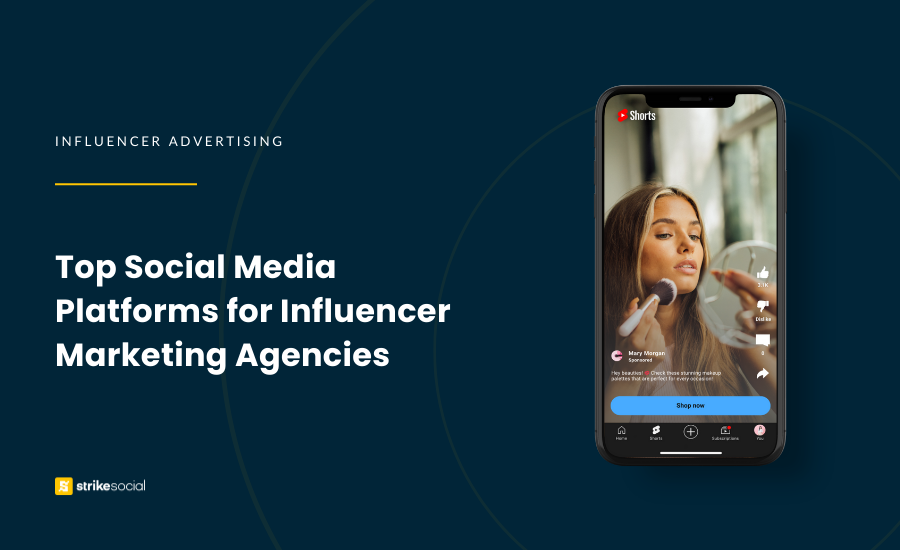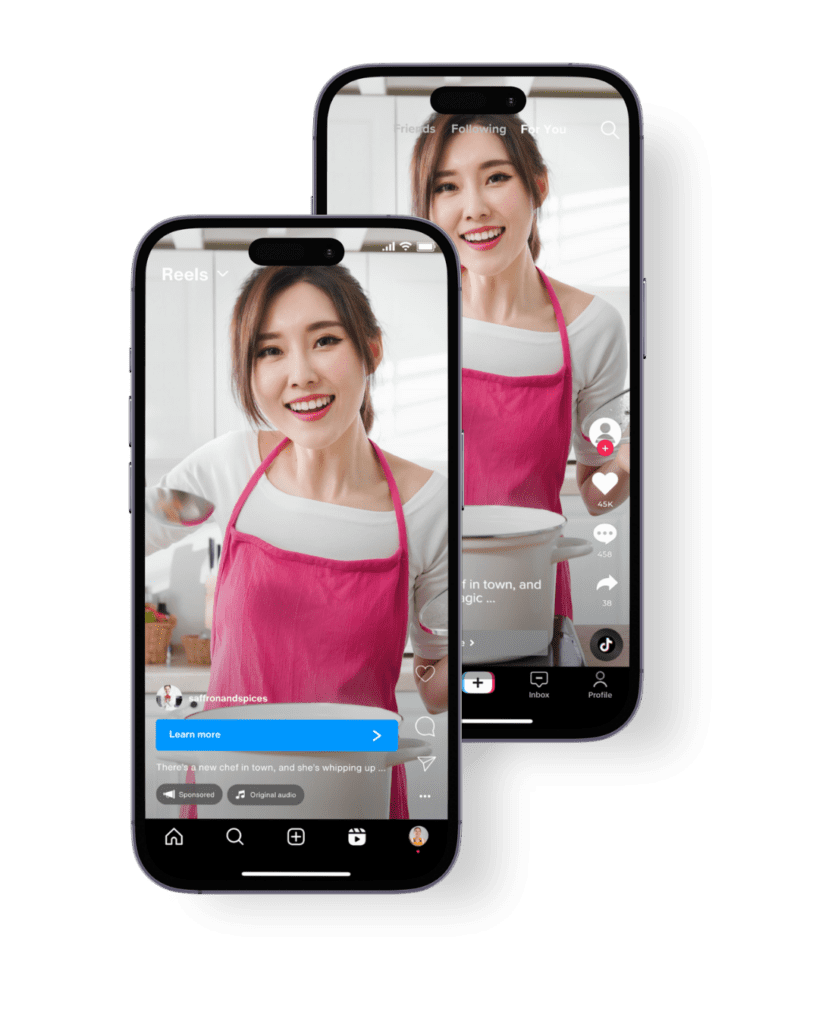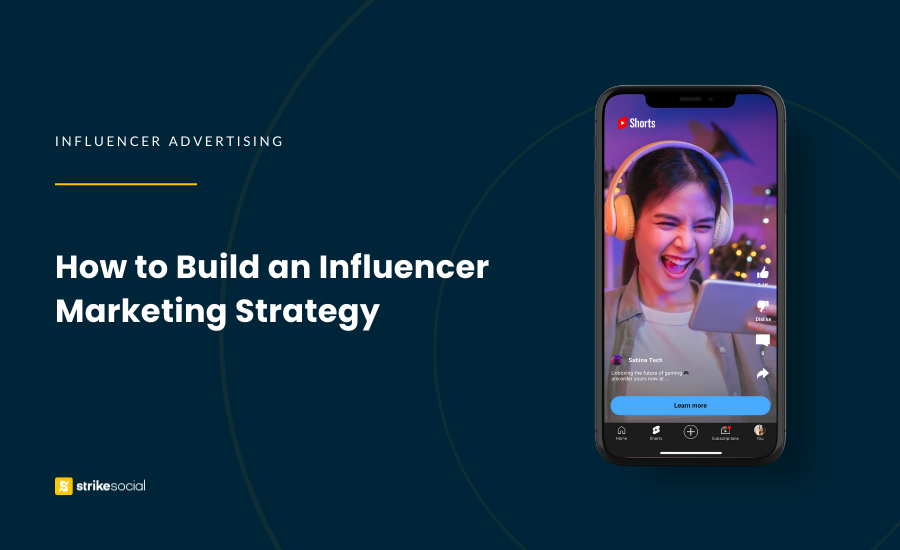Strike Overview
- Around 86% of U.S. businesses have already implemented an influencer marketing strategy—are you optimizing an existing approach or still in the planning stage?
- Influencer marketing helps expand reach by partnering with content creators who are trusted voices in their niche and can connect your brand to audiences you may be missing.
- In this guide, we walk you through building an influencer marketing strategy that can scale alongside your paid social campaigns across major platforms.
Jump to Section
This post was updated in April 2025 to provide you with the latest information.
Building an Influencer Marketing Strategy That Scales with Paid Media
Influencer marketing has become one of the most effective ways for brands to build trust, boost engagement, and connect with social-first audiences. With 72% of Gen Z and Millennials following influencers, and over half making a purchase based on an influencer’s post, it’s clear that creators hold real sway in the buyer journey.
However, not all influencer marketing strategies can drive equal results. Thus, to maximize impact, your influencer campaign must be designed with paid social in mind. In this guide, we’ll show you how to build an influencer marketing strategy that seamlessly scales with platforms like Meta, TikTok, and YouTube.
What Is Influencer Marketing?
Influencer marketing involves partnering with individuals who have built authority, credibility, and a dedicated following in specific niches. These influencers can shape opinions and drive purchasing decisions, especially when they share relatable, personal content across social media platforms.
By showcasing your product or service through someone their audience already trusts, you create a more human, attainable connection between your brand and potential customers.
Furthermore, influencer marketing thrives on long-term collaboration. When an influencer genuinely connects with a brand, their content becomes a cycle of trust: they use the product, recommend it authentically, and inspire action from their followers. This is the foundation of a successful social media influencer marketing campaign.
Organic Influencer Marketing vs. Influencer Advertising
Understanding the difference between organic influencer marketing and influencer advertising through paid social is key to crafting a strategy that performs.
- Organic Influencer Marketing: This approach is typically more casual and relationship-driven. Brands may send products or offer services in exchange for a review or mention, without a formal contract.
If the influencer enjoys the experience, they may share a spontaneous Instagram Story, a TikTok mention, or a YouTube vlog. While organic posts feel authentic, they rely solely on the influencer’s reach and discretion. - Influencer Advertising through Paid Social: This involves formal agreements where influencers are compensated for creating sponsored content. The content is then repurposed into influencer ads, extending its reach to more audiences.
By using paid social ads, brands gain control over placement, targeting, and scalability, making this approach ideal for reaching broader, performance-driven objectives.
Effective influencer marketing strategies aren’t just about big budgets — it’s about building genuine relationships. That said, influencer advertising can still boost engagement by as much as 61% through paid social media.
Combining both approaches is the best way to maximize impact across social media advertising platforms. The authenticity of organic influencer relationships blended with the reach and precision of paid social advertising is a powerful engine to drive results towards your brand’s objectives.
Is Influencer Marketing Right for Your Brand?
If your brand already has an in-house creative team, you’re likely producing content that reflects your identity and voice. However, integrating an influencer marketing strategy can take that a step further, offering a native, authentic presence in social feeds that often outperforms traditional display or video ads.
It’s natural to feel hesitant about diving into influencer marketing, especially when it adds a new layer to your campaign strategy. But the benefits often outweigh the uncertainty. Here’s how to tell if it’s the right move for your brand.
Key Signs Your Brand Could Benefit from Influencer Marketing
- You want to build authenticity and trust: Influencers create content that feels personal and relatable—something polished ad creatives sometimes can’t replicate. In fact, 48% of consumers say they’re more likely to purchase a product recommended by an influencer they follow.
This trust carries over to your brand, especially when the influencer’s values and voice align with yours. - You want to reach niche or hard-to-target audiences: Many influencers and microinfluencers build communities around specific interests, demographics, or lifestyles.
While platform tools like Meta’s Advantage+ Audience offer strong targeting tools, influencers offer something algorithmic targeting can’t: personal relationships with highly engaged followers. That makes influencer ads an effective way to expand your reach into niche segments. - You’re ready to scale through paid social: Organic posts only go as far as an influencer’s follower count. But by integrating influencer content into your paid social strategy, you can unlock scalable growth across platforms like Instagram, YouTube, and TikTok. Influencer creative is often platform-native and performs well as sponsored content, giving your campaigns more flexibility and higher engagement rates.
In modern digital marketing, influencer ads enhance the entire media strategy by combining creative storytelling with high-performing ad formats. Adding an influencer marketing strategy to your campaign mix can pay off in both trust and performance.
Further Reading

Which Social Media Platform Works Best for Influencer Marketing?
The success of your influencer campaign doesn’t just depend on the creator — it also hinges on the platform they use. Whether it’s TikTok, Instagram, or YouTube, each channel offers different advantages when it comes to reach, engagement, and ROI.
How to Create an Influencer Marketing Strategy
Now that you’re ready to launch your influencer marketing campaign, it’s time to build your strategy. This quick-start guide outlines the core steps to help you kickstart expanding your audience across different platforms.
Step 1: Find the Right Influencers for Your Business
Start by analyzing whether the influencer’s audience aligns with your target demographics, such as their followers’ age, location, interests, and content themes. For example, a skincare brand targeting Gen Z should collaborate with influencers whose audience reflects that age group and a lifestyle that complements your brand identity.
Don’t just rely on follower counts. Examine engagement rates, content tone, and authenticity. With view counts now including replays and auto-plays, especially for YouTube Shorts views, it’s better to ask for engaged views to align better with your YouTube ad metrics.
Step 2: Build Relationships with Influencers
Initial campaigns are a chance to test content fit and audience reception before entering longer-term agreements. Look for how creatively aligned the influencer is with your brand, and how well their followers respond to branded content.
The goal should be to move from one-off posts to sustained partnerships. Long-term collaborations foster trust, turning influencers into brand advocates who drive deeper loyalty among their audiences.
Be clear on expectations early: align on objectives, content formats, timelines, and creative direction to build a productive and transparent relationship.
Step 3: Negotiate an Influencer Marketing Package
Your influencer marketing package should include:
- Defined deliverables (e.g. 1 video/week, 2 Instagram Stories, etc.)
- Usage rights (e.g. 1 product review post, 1 exclusive asset for paid ads)
- Exclusivity clauses (e.g. no partnerships with direct competitors during the campaign)
Rates will vary depending on the influencer’s tier (nano, micro, macro, or celebrity), platform, and content complexity. Negotiate based on both their reach and engagement, as well as the type of content you need them to produce.
Step 4: Optimize Content for Paid Social
Turn top-performing influencer content into influencer ads by adapting formats, hooks, and CTAs for each platform. Boosting organic posts can significantly expand your reach, especially when the content already resonates with followers.
- Use Spark Ads on TikTok when promoting influencer ads. Request an authorization code from the influencer to repurpose their post in your ad campaign.
- On Instagram, use Partnership Ads (formerly branded content ads). Similarly, the influencer shares an ad code, which you upload in Ads Manager for use in your campaigns.
Test variations in creative, captions, and CTAs to find what clicks with your audience, and continue refining as results come in.

Step 5: Measure Results and Scale
Using ad management tools, track KPIs such as reach, engagement, conversions, and video views. Make sure to distinguish between autoplays and engaged views, especially for short-form formats like YouTube Shorts, Instagram Reels, and TikTok.
Accurate measurement helps you identify top-performing creators and content styles worth reinvesting in. Use these insights to confidently and efficiently scale your influencer marketing strategy across multiple channels.
Making Influencer Strategy Work for Your Paid Media
Influencer advertising is no longer an optional add-on for brands; it has now become a core driver of digital marketing performance. As audience behavior shifts, authentic influencer content is what truly resonates and drives action.
By partnering with creators who authentically fit your brand, you can further amplify your reach by boosting it on paid social media. The combined credibility and relatability of influencers alongside the precision targeting and scalability of paid media can help you achieve your marketing goals.
Ready to develop and execute an influencer marketing strategy that drives results? Talk to our team of experts and start building your next high-impact campaign.
Article by
Lee Baler, Strike Social’s VP of Sales & Strategy
Lee leads global strategy, helping clients and agencies maximize YouTube and paid social performance. Constantly tracking industry trends, he translates insights into strategies that help brands stay competitive and achieve sustained profitability.








